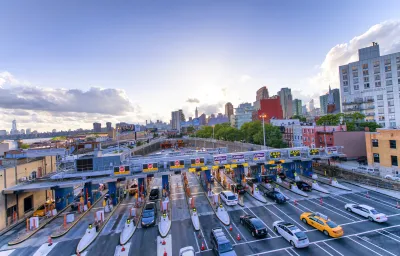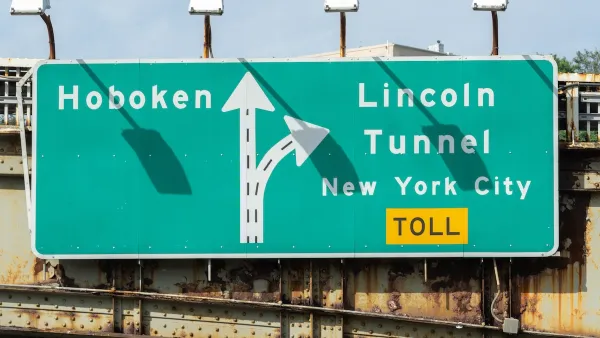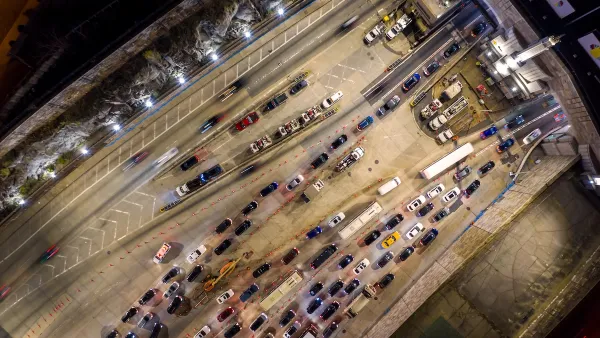The city’s new congestion pricing program, scheduled to take effect next year, could mean billions in new transit funding.

What will New York City’s congestion pricing program—now in its final planning stages—mean for public transit? As Stephen Nessen explains in Gothamist, the program is required by a 2019 state law to “bring in at least $1 billion a year for the MTA.”
Nessen adds, “The agency must use that money to finance $15 billion in bonds to pay for mass transit improvements included in its 2020-2024 capital plan — which was formed in the aftermath of New York City’s 2017 “summer of hell” when the subways and commuter railroads fell into disrepair.” The money will fund the expansion of the Second Avenue subway, the Penn Access project, and accessibility improvements at subway and Long Island Rail stations, as well as more electric buses. The article points out that congestion pricing revenue cannot legally be used for balancing the agency’s operating deficit, as some critics have claimed.
The next step is coming up with a price structure and exempt groups. Already, “Drivers won’t pay if they remain on the West Side Highway or FDR Drive south of 60th Street. Low-income drivers who live in the congestion zone, emergency vehicles and cars transporting people with disabilities are also exempt.” New Jersey officials say Garden State residents who commute to New York should receive discounted rates, although a 2021 analysis revealed that, of the 1.6 percent of New Jersey commuters who would likely pay the toll, most are more affluent than the average resident.
FULL STORY: MTA’s congestion pricing plan means big upgrades for NYC transit

Analysis: Cybertruck Fatality Rate Far Exceeds That of Ford Pinto
The Tesla Cybertruck was recalled seven times last year.

National Parks Layoffs Will Cause Communities to Lose Billions
Thousands of essential park workers were laid off this week, just before the busy spring break season.

Retro-silient?: America’s First “Eco-burb,” The Woodlands Turns 50
A master-planned community north of Houston offers lessons on green infrastructure and resilient design, but falls short of its founder’s lofty affordability and walkability goals.

Test News Post 1
This is a summary

Analysis: Cybertruck Fatality Rate Far Exceeds That of Ford Pinto
The Tesla Cybertruck was recalled seven times last year.

Test News Headline 46
Test for the image on the front page.
Urban Design for Planners 1: Software Tools
This six-course series explores essential urban design concepts using open source software and equips planners with the tools they need to participate fully in the urban design process.
Planning for Universal Design
Learn the tools for implementing Universal Design in planning regulations.
EMC Planning Group, Inc.
Planetizen
Planetizen
Mpact (formerly Rail~Volution)
Great Falls Development Authority, Inc.
HUDs Office of Policy Development and Research
NYU Wagner Graduate School of Public Service




























